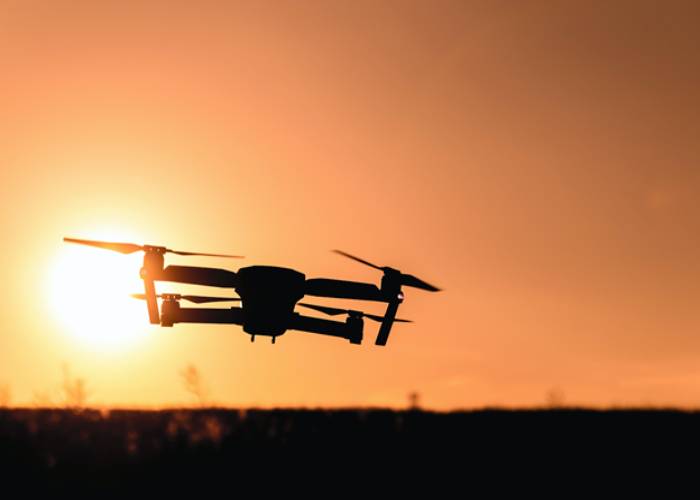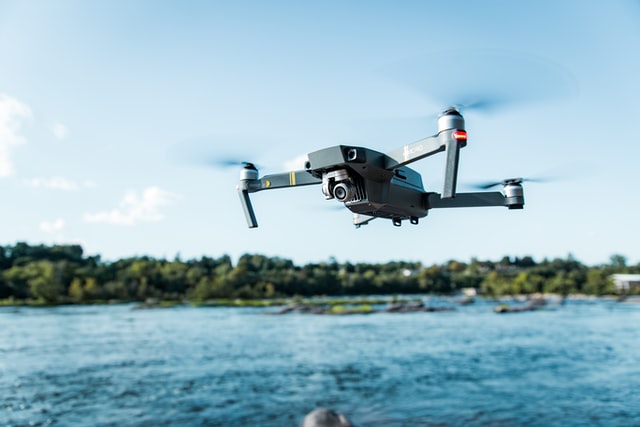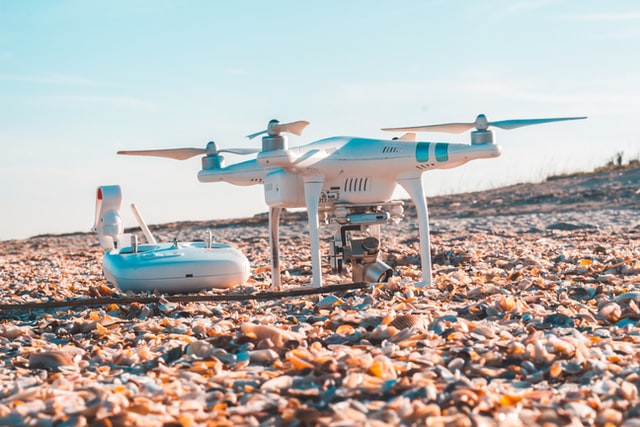The Rise Of Fully Autonomous AI Drones
It would be an understatement to say that autonomous drones don’t exist yet. However, autonomous drones, in the form of AI drones, are already being used to a certain extent.
For a better understanding, let’s assume that the aerospace industry implemented five distinctive levels of autonomy for drones. These may be defined as;
- Level 0: no autonomy
- Level 1: a certain level of autonomy, including altitude control system; however, the primary control is still with pilots
- Level 2: Multiple autonomous systems onboard and working simultaneously; the control is still with the pilots
- Level 3: Enhanced autonomous systems under specific conditions; however, the pilots must monitor the progress of drones
- Level 4: The pilot has a greater level of autonomy in most situations. However, he can resume control when he thinks it is appropriate.
- Level 5: Fully autonomous drones
Everything About The Rise Of Fully Autonomous AI Drones
Now, let’s see how far the Artificial intelligence drone technology has gone thus far. The development of modern AI drones capable of handling most tasks in different fields like agriculture or surveillance means that we are already in advanced level 4 stages. AI drones today can handle assigned tasks with little to no supervision.
However, we still have to go to the next level, which is the development of fully autonomous drones. However, before achieving that, technology will have to overcome some challenges. Interestingly, these challenges are little about technology and more about regulatory compliance and safety. For instance, before we move into the development of Level 5, fully autonomous drones, we have to make sure that such drones can comply with safety regulations and meet local/international air traffic laws.
Challenges for Level 5 drones that are yet to be overcome include
- Designing, development, and testing of sensors and radars to ensure the capability of AI drones to withstand any unforeseen obstacle and operate in any environment
- Design and development of software that’s viably safe and secure
- Improving the design and material of drones to enhance the travel distances, as well as lower the weight
The key to overcoming these challenges lies with simulations, which can assist in optimizing individual parts of the AI drones, along with the whole system.
Also Read – Top Budget-Friendly Drones With Cameras
What is the difference between AI Drones and UAVs?
Drones and UAVs are often used interchangeably. In essence, drone isn’t a technical term but a general term.
In aerospace, UAVs, or Unmanned Aerial Vehicles, represent flying machine learning solutions that can be controlled remotely or autonomously. As with many other technologies, UAVs trace their origin to the military, where they were used as reconnaissance and surveillance tools to spy on enemies.
Today, Artificial intelligence drones have made their way across many fields and applications, including terrain mapping, livestock management, agriculture, urban planning, forestry, coastal monitoring, and much more.
The Rise Of Fully Autonomous AI Drones
Well, there may be high fantasies about the future of AI drones, such as air taxis, air delivery, and others. However, certain obstacles must be overcome before such applications become the norm.
With the current technological advancement, the rise of autonomous AI drones isn’t a matter of “When” but “How” we want these drones to be.
Technically speaking, it’s easier to design a fully autonomous AI drone capable of flying between two pre-defined points (we already have these drones applied across many fields). However, it’s much more predefined, with a design that enables these flying robots to deliver pizza to the doorstep, especially in an urban environment (Amazon is already testing this application).
In aerospace, the most challenging aspect is to design and control any craft’s takeoff and landing approach. In the case of pizza delivery, the drone would have to accomplish this in an urban environment, avoiding the weather birds, clotheslines, houses, and other objects that pose serious safety risks. So, until the technology is mature enough to take on these obstacles safely, we may have to be content with the pizza boy and be ready to pay some nice tip to the person.
Certain limitations have to be overcome in the current technology used in the design and development of AI drones. For instance, while AI drones can survey vast swaths of agricultural land autonomously, they are typically supervised by pilots who are ready to take control of any unforeseen events.
So, to summarize the current state of AI drones, we can safely say that the technology still lacks to:
- Manage complex environments or unforeseen situations
- Avoid obstacles in an urban environment
- Handle adverse weather
As mentioned above, we are already in the advanced stages of autonomous drones. AI drones take over various autonomous roles like remote site inspections, emergency use, and vital deliveries to remote areas. In a few years, we may see Artificial intelligence drones taking on even more autonomous roles.
However, before that happens, the technology must prove its viability for commercial use. In short, there’s still some time left before we can have a pizza bot bringing our favourite Domino’s Pizza.
Fully Autonomous Drones and Airspace Safety
Airspace safety is a crucial aspect that requires extensive work before fully autonomous AI drones can take to the skies.
The aerospace industry has already been working in this aspect for some years. The problem of airspace safety will require new rules and regulations for air traffic control, including predefined routes and advanced sensors to avoid deadly incidents.
As a starter, the capability to sense the environment without getting fooled by various obstacles like glare, fog, lighting, etc. Moreover, for fully autonomous AI drones to be commercially viable, such sensors must be lightweight to maximize travel distances, improve manoeuvrability, and increase carrying capacity. Also, the sensors must be affordable for commercial uptake of the technology.
Fortunately, we already have the technology like radars and transponders used in aeroplanes to avoid air traffic conflicts. Such technologies can be optimized and integrated into fully autonomous AI drones to improve viability.
Next, we must design and develop robust software and AI systems to receive sensor information, analyze it, and make intelligent decisions. Again, simulations will be invaluable in this case to train Artificial intelligence systems and ensure the safe decision-making capacity of AI systems.
Lastly, the rise of fully autonomous AI drones would need more efficient and powerful batteries. This is important because these drones’ financial viability or commercial success will rely on better and lighter batteries.



















